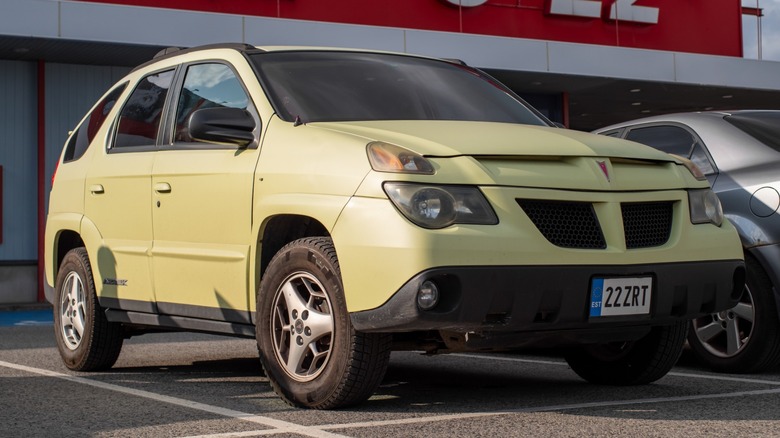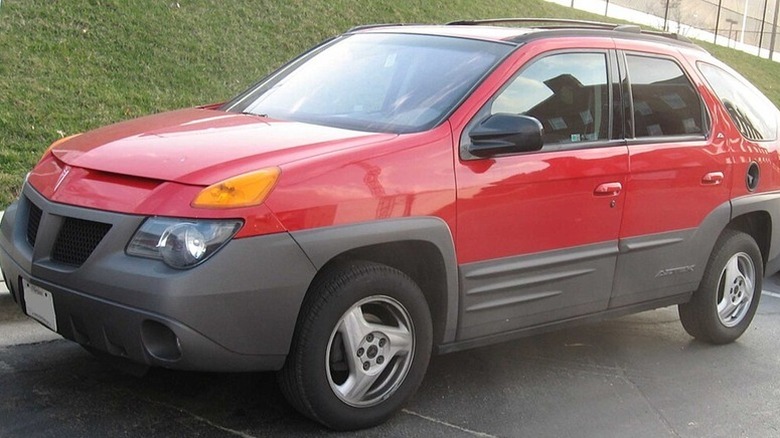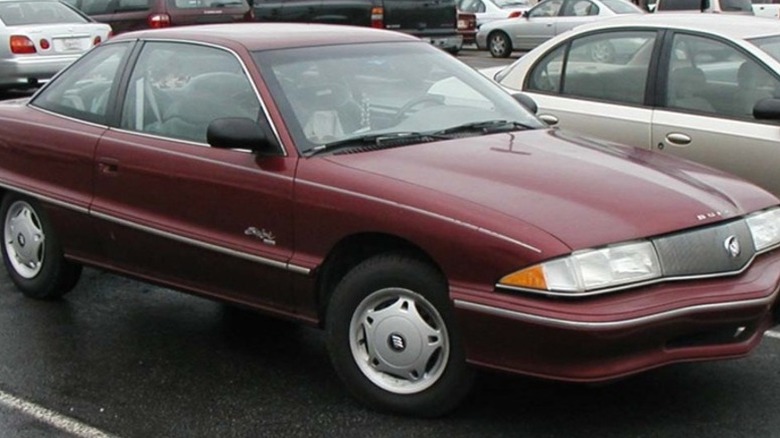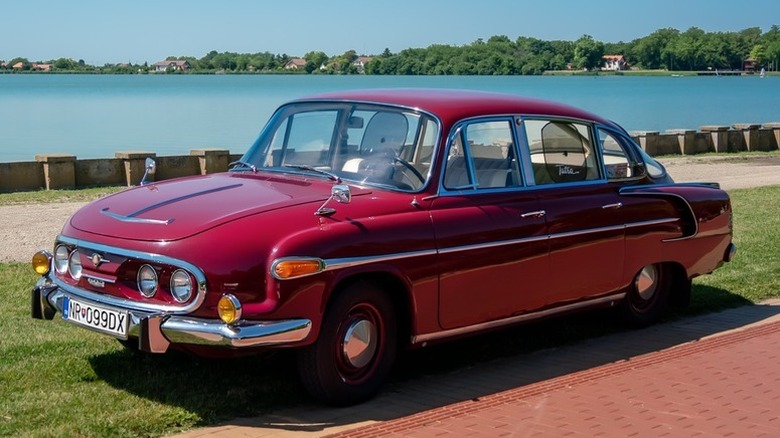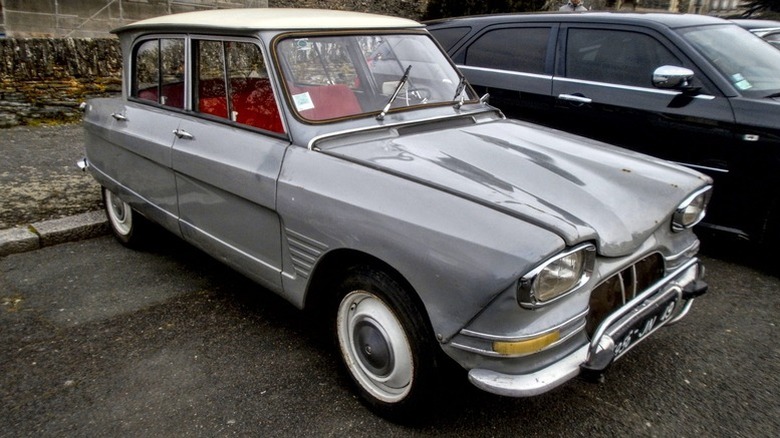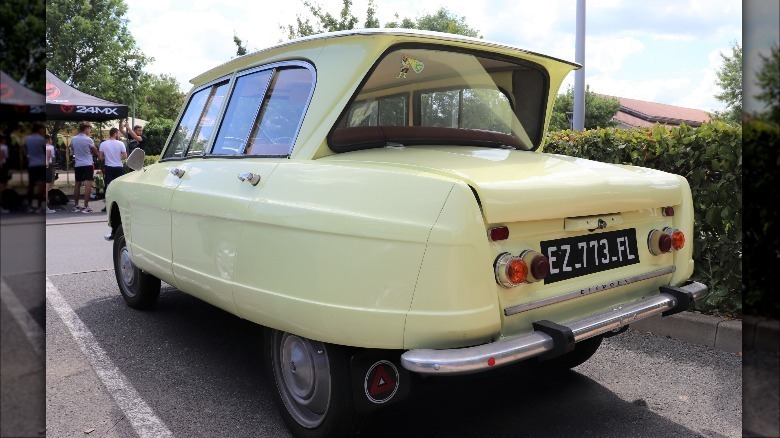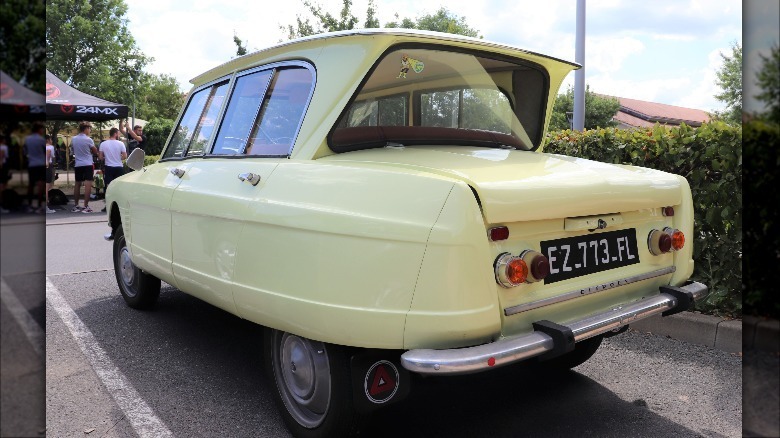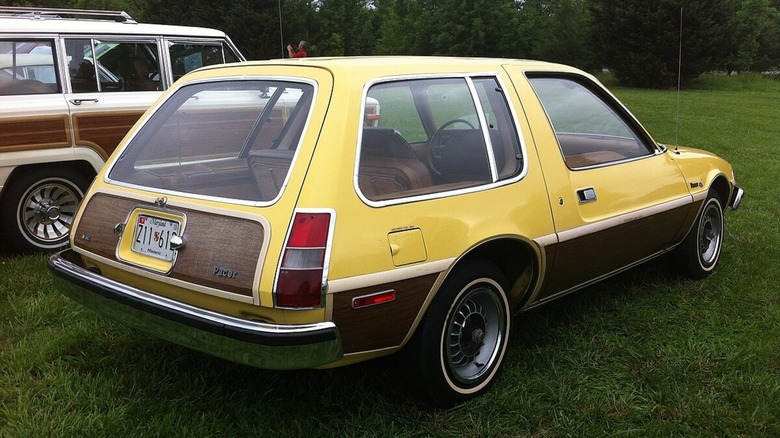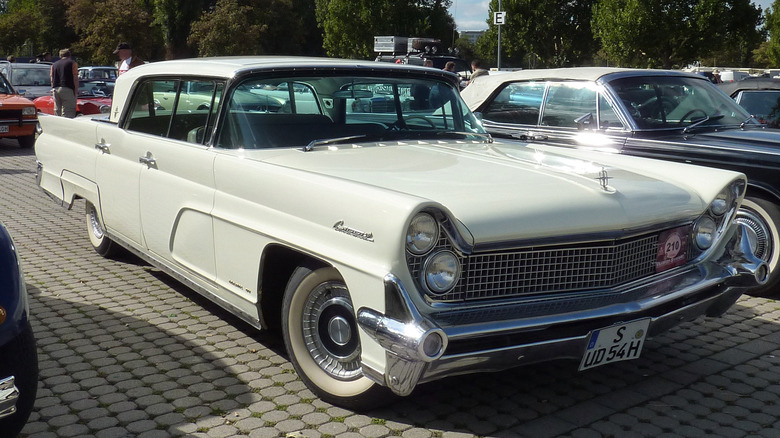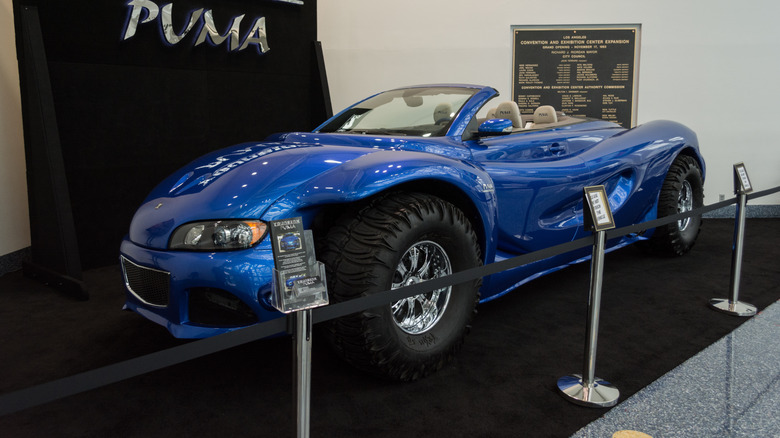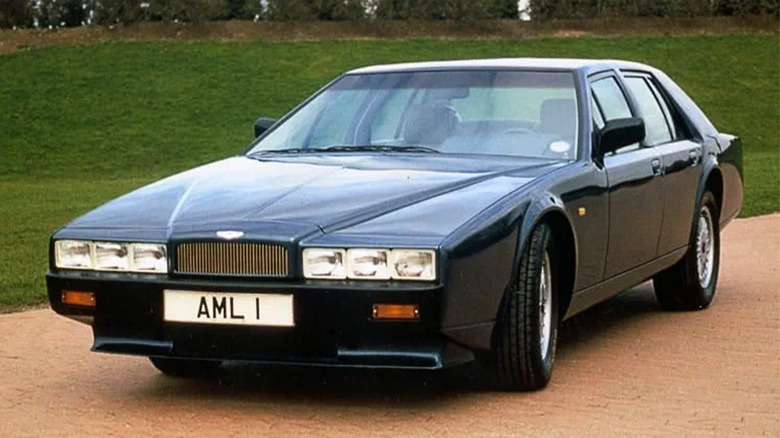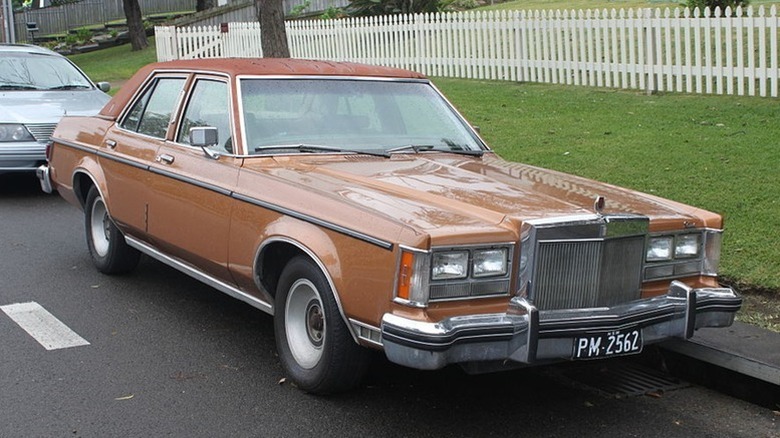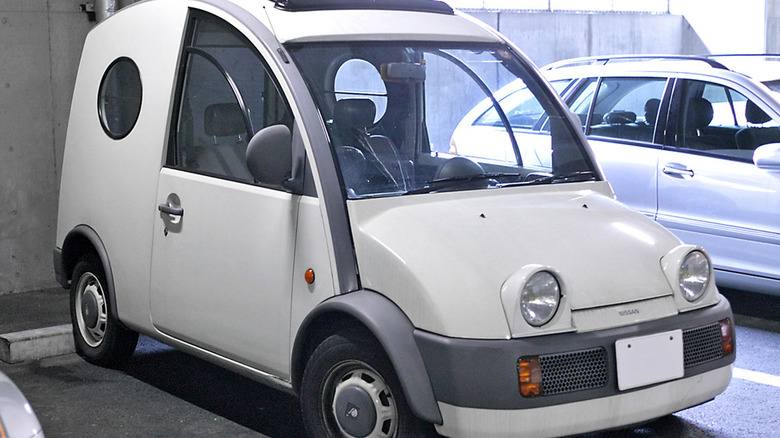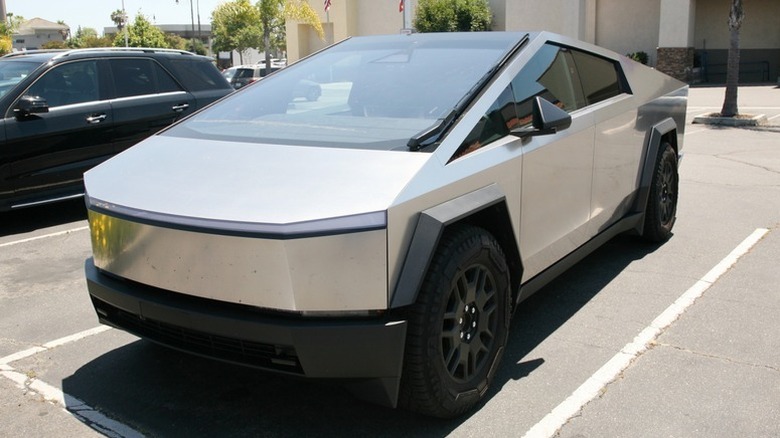14 Of The Worst-Looking Cars Ever Designed
Automobiles have long been more than a means of mobility, and how a car looks greatly affects how the public perceives both the car and the owner. Some cars leave factories as coveted mechanical works of art. However, the converse is true, and all too often, cars leave factories with styling choices that boggle one's mind. Sometimes, the proper description for a car — put plainly — is ugly, and sadly, there are far too many ugly cars in this world.
For most regular production cars of the modern era, the time from the new model idea to delivery at the dealer runs about five to six years, although some automakers are implementing processes to shorten that to as little as three. Designs are sketched out early on and eventually approved for the production line. This process requires multiple teams of people working to manufacture each model, and sometimes, a car comes out, making you question how it ever got approved. It is baffling how dozens of people can go through with a truly bad design and subject it to the buying public, but it still happens today.
Bearing in mind that heavy trucks and other specialty vehicles are built for purpose over style and that small production and experimental cars may be overseen by only a few people, these vehicles get an ugliest car pass. But for mass-produced vehicles built by established corporations with no excuses, these are some of the ugliest cars of all time.
Pontiac Aztek
For decades now, the Pontiac Aztek has been the punching bag of bad design, lambasted by the public and press for having uniquely ungainly features and questionable styling. But long before being the butt of jokes, the Aztek was a budding concept known in the office as Bearclaw, existing only in two dimensions. However, being a part of a bloated corporation requiring cost-cutting to coexist with all designs, the powers that be offered the Pontiac design team an underwhelming U-body minivan platform on which to build a new crossover SUV, although the term crossover had yet to be coined.
Bob Lutz, vice chairman of GM after the Aztek, told Car and Driver that bad vehicles "happen in stages." GM management mandated that 40% of vehicles would be innovative and started setting goals to that end. This ignores the reality that innovation comes from creative thinking that cannot be forced. Thus, the project team for the Aztek put together a model to achieve goals set by management instead of stepping back to ask if they were building something anyone might actually want. Instead, GM management ignored market research, insisting they knew what people wanted, only to be told flatly that the Aztek was not it.
The Aztek offered many features ahead of its time and offered some inventive accessories, such as a trunk-mounted tent. But no amount of innovative features could overcome its hideous design-by-committee aesthetic. And that is why it regularly gets included on lists of the ugliest cars.
Buick Skylark 6th-gen
We are all familiar with an actor or musician who once had all the fame and fortune while living in the spotlight and riding high, only to see their fortunes fade along with their talent and looks. It is a familiar tale, and it also happens to automobiles.
Celebrating its 50th anniversary, Buick released a production version of its XP-300 concept, a stunning limited-production convertible loaded with options as part of GM's "dream cars for the public." That ended in 1955, and Buick revived the name in 1962 as a trim for the Special and kept it going for a few more decades. The pinnacle of its development came with the 1970 Buick Skylark Gran Sport 455, a powerful and attractive muscle car coupe and the pinnacle of the muscle car era.
The Skylark's decline began in the '70s, hitting what many thought was its low point around 1980 with the X-body compact Skylark that helped sully GM's already lousy reputation. But when Buick released the 6th-gen Skylark in 1992, it hit a new low. The compact Skylark's most striking feature is also its least appealing, the bird beak grille. Its wraparound body cladding does little to help, and its partial rear wheel arch harkens back to a time when Buicks were classy and elegant, everything this is not. MotorWeek called its design controversial and divisive back then, but they probably held back so GM would let them film another car.
SsangYong Rodius
Americans' first contact with Korean automobiles happened in 1986 with the Hyundai Excel. And while Kia later arrived, other Korean automakers stayed away. SsangYong is a Korean automaker that dates back to the end of the Korean War, first building an American vehicle under license, the Jeep CJ.
SsangYong continued building off-road vehicles both for the domestic market and export, but the styling department seems to have lost its way. The attractive Jeep design gave way to more dubious styling with the later Korando, Musso, and Actyon. Hideous as those cars may be, SsangYong debatably saved the worst for the Rodius in 2005.
SsangYong entered into a partnership with Mercedes-Benz in 1991, gaining access to well-developed platforms and technology — SsangYong even produced its own version of the successful and reliable Mercedes W124 called the Chairman. This may have meant the Rodius received a Mercedes engine, but it appears the styling department provided nothing, leaving it to suffer from multiple design flaws. Overall, the styling is bland, with little to set it apart, but more egregious are its proportions. To make it large enough for three-row seating comfortably accommodating 7 passengers, the roof line to the rear is high and looks like the cargo area is grafted onto a sedan as an afterthought. The front looks similar to a contemporary Mercedes sedan that's been a bit inflated like a balloon to remove what makes a Mercedes distinctive. Something about it is just wrong, and it's a wonder anyone bought one at all.
Nissan Juke
When considering a car's aesthetics, one must really consider it as a whole package, including its name. Car names like Jaguar, Barracuda, and Mustang all evoke images of quick and agile creatures, while Challenger and Charger sound ready to fight. So, what exactly does Juke evoke? What exactly is a Juke? Mostly, why did Nissan choose Juke? Perhaps nobody knows.
Nissan's Juke has been in production for many years across two generations now, and people keep buying it for some reason. Perhaps the name doesn't matter, but its styling should. Here's a pretty good indicator that something was wrong: back when it was first introduced, a writer for The Guardian compared it to a "pug-hog hybrid." Is that what a Juke is?
The Juke is a compact crossover, sometimes called a city SUV, that sits taller than most hatchbacks while offering no more space or comfort. The front fenders are fat and swoopy, while the curvy exterior slopes heavily at the rear, rendering cargo space nearly useless. With bulbous lights high on the fenders and circular ones lower in the bumpers, it is difficult to discern which are the headlights and why it has the other ones. The round headlights do evoke "bugeye" cars of the past, such as the Austin-Healey Sprite or Subaru WRX, but without the charm. It also says something that Richard Hammond of The Grand Tour has openly shared his visceral hatred of this car. But according to The Autopian, at least it's "different." So yeah, there's that.
Tatra 603
Sometimes, a car can be ugly yet endearing. A car coming up short on looks can be overcome by being a curiosity. Rarity also sometimes can boost a car's street cred, and in the United States, cars built by Communists are like hen's teeth.
In continuous operation since 1851, Tatra is the oldest of Europe's automakers. While it began as a capitalist company like any other, it fell under the control of the Communist Party after WWII. To its credit, before the war's end, Nazi officers liked driving the T87 but overestimated its handling, resulting in the death of hundreds of officers. After its Nazi-killing spree, Tatra produced the 603, a large executive car. Because Russian cars were of such poor quality, Tatra was given authorization to build it.
The Tatra 603 is a large sedan driven by an engine in the rear, a setup usually reserved for small cars. Also unusual is that its 2.5-liter overhead-valve Hemi head V8 used air-cooling, a genuine anomaly. Each car was hand-built and provided sumptuous accommodations with large and plush bench seats offering a supple ride. Only about 20,000 of these were built as they were only for party leaders and others who were "more equal than others" in the Orwellian communist society — Fidel Castro owned one. And while some love it for being so awesomely weird, it really is kind of an odd bird. Although it may be ugly, that is part of its appeal.
Citroën Ami 6
Most Americans have little experience or even knowledge regarding French vehicles. Citroën last sold in the States in 1974, followed by Renault in 1988, and finally Peugeot in 1991. Regardless, classic French cars are quirky and often have styling you might only call unique. They have also created some genuine gems.
The hydro-pneumatic suspension of the Citroën DS is a marvel of post-war engineering
, while the
Renault 5 Turbo is a rally beast
. However, the 1961 Citroën Ami 6 falls a bit short.
Wanting something to fit in the lineup between the luxurious DS and the 2CV peoples' car, Citroën came up with the Ami 6. Using the architecture of the 2CV as a base, designer Flaminio Bertoni crafted its design. Once he had an initial design prepared, management made changes to muck things up. An engine change raised the height of the hood, while Citroën management wanted different headlights placed higher up. Therefore, instead of having a raked hood, it ended up with a weird dip up front.
Perhaps the worst of things is the rear glass raked rearward in an attempt to make the car look bigger with a longer roofline. Bigger looking or not, it is a questionable choice and makes the car just look plain weird. Inside, the Ami 6 is as basic as it gets, and not even the rear windows opened at first. Today, it is the perfect kind of weird for some classic car buyers, but a beauty it is not.
AMC Gremlin
In the category of ugly cars, few automakers have the reputation of AMC. The Gremlin was an ugly car in its own right, and was panned for many years because of it, but ultimately gained a cult following. However, I think that the Gremlin is low hanging fruit because of its memorable name and long-standing reputation for not being the most beautiful car on the market. Indeed, the uglier AMC car is, by far, the AMC Pacer, the somehow uglier cousin to the AMC Gremlin that was made in the same era.
First of all, the thing looks like someone stuck a straw into a normal station wagon and blew until it bubbled up like chewing gum. Add to that the heinous color schemes, like a sickly-looking green and the unholy combination of red and beige together, and you have a car that not only looks goofy, but also looks like it was colored in by a six year old. The overly large windows were reportedly great for visibility, though, even if they were comically large for a car that small. At least it was powered by a V8, albeit not a very powerful one.
The delicious irony is that the Pacer is something of an automotive legend. AMC released the car in 1975 on the heels of the Gremlin and discontinued the car in 1979. However, it was used in "Wayne's World" in the famous Bohemian Rhapsody scene and as a frequent finalist in the Concours D'Lemons, a "worst in show" car show that celebrates the worst cars in history.
Third-generation Lincoln Continental
It's no secret that the 1950s were excessive in terms of car design. It featured huge cars, huge engines, and most of them were lavishly designed with massive front and rear ends along with "futuristic" add-ons like tailfins. Many of those cars were ugly pieces of fashioned sheet metal in their own right, but there is something special about the third generation of the Lincoln Continental. It was made from 1958 to 1960 and it's a delightful example of what an ugly classic car can look like. Lincoln also made these in varying body styles, including a limosine at one point.
So, to be honest, there isn't too much here that wasn't also present in other huge, V8-powered cars of its era. The nose and trunk were equally long while the roof looked scrunched down, giving it a compressed look. With the nearly equal length of the front and rear and its compressed-looking top, the Continental looks like someone stepped on a top hat. I will say, though, that the whitewall tires on a white paint job look pretty nice. However, it's sitting under 5,450 pounds of sheet metal, giving the whole package cartoonish proportions.
To be fair to Continental, most vehicles from that era had those ridiculous proportions, even the best ones made by the biggest automakers. Even so, in an era where all the automakers were trying to outdo one another, the Continential seems to have taken things further than most. Fortunately, the 1960s ushered in the muscle car era, which had, in my opinion, much nicer looking cars.
2013 Youabian Puma
On the spec sheet, the 2013 Youabian Puma is an impressive vehicle. It came equipped with a 7.0-liter V8 that made 505 horsepower and 470 lb-ft of torque. It was able to scoot to 60 MPH in 5.9 seconds. Perhaps the most impressive feature of the car, and not in a good way, is that it cost $1.1 million to purchase. Reportedly, only three were ever made. It was also absolutely massive, at around 20 feet long. For reference, that's slightly longer than 2025 Chevy Suburban. It's hard to gauge in video format, but the videographer in this video literally can't see inside of it because they're too short.
I'm not quite sure what it is, but something about this car makes it unsettling to gaze upon. Maybe it's the way the hood and front bumper don't cover the front wheel, or the fact that its proportions don't make it look wide enough for two people, despite the fact that it's nearly eight feet wide. Maybe it's the overenginnered body panels. Who knows? Its original designer, Dr. Kambiz Youabian refers to it as a "monster truck car" and designed it after his friends told him that they were tired of sports cars.
It is, without a doubt, one of the ugliest supercars to ever exist. Its sheer sizes apparently also makes it a nightmare to drive as it barely fits in its own lane on narrower streets. It almost certainly turns heads whenever it's out, but not for a good reason.
Aston Martin Lagonda
The Aston Martin Lagonda certainly deserves placement on this list, but it's also one of the longest-running vehicles to do so. Aston Martin started making this box of a car in 1974 and continued doing so until 1990, just in time to be a part of the death of the American muscle car and the weird period of time for automakers that came immediately after. It's also one of the rarest cars on the list, with an average of around 25 per year made for the U.S. market.
So, here's the thing. Cars in the 80s were very angular in general. Nearly every automaker was boxing things off and sharpening up those angles to adapt to market preferences. However, the Lagonda, especially the earlier ones, was much like the Lincoln Continental of the late 1950s where it may have taken things too far. This is a vehicle without any curve. In fact, if you asked me to draw you a car in 1993 when I was six years old, there's as very good chance that the product of my efforts would've looked like an Aston Martin Lagonda. The design certainly has its fans, but also its detractors.
Aston Martin did add some curves in the back nine of the Lagonda's lifespan, which helped a little bit. You can still find these on the used market, but they're ridiculously expensive for what they are. However, if you're the box factory worker from "The Simpsons," this is the car for you.
Lincoln Versaille
The '70s were a tough time for automakers. New governmental regulations, fluctuating energy prices, and evolving consumer tastes presented constant challenges for American automakers that were further compounded by emerging foreign competition. Automakers also catered to luxury buyers, building larger and larger cars throughout the decade. But when Cadillac released its downsized 1976 Seville to compete with imported cars from Germany, Lincoln was caught out in the cold. In response, it quickly came up with the Versailles and subjected it to buyers in 1977.
While the Seville was Cadillac's attempt to woo buyers with a smaller car specifically designed to compete with imported luxury cars, the Lincoln was a rushed job. To quickly get a smaller car to market, Lincoln went to Ford and picked out its midsize Granada, and gussied it up with some leather, an optional sunroof, and a new grille and dumped it onto dealers.
To be fair, Lincoln added a bunch of insulation to reduce vibration and quiet the cabin, along with thicker door seals, while it installed accessories like clocks and climate control inside. It received a luxury treatment, but underneath everything, it was still a Ford Granada with little discernible difference outside. The Ford was not a particularly attractive car, and the Lincoln grille may have made it worse. Moreover, the faux spare wheel hump on the trunk was always tacky and out of place. Sales never took off, and its ugliness and rareness are now its most endearing features.
Fiat Multipla
While its presence in the United States has always been on the fringes, Fiat is a major automaker in Europe, and its small cars of the post-war period gave it success in multiple markets by providing consumers small and capable packages at affordable prices. By the '90s, consumers in Europe wanted vehicles a bit larger with capacity for full-size families. In 1998, Fiat revived a name previously applied to a tiny five-seater and introduced its new small people carrier, the Multipla.
Based on the relatively small platform shared by the Bravo and Brava, the Multipla squeezes seating for six into a space ordinarily reserved for four. To do this, decisions were made. It required stretching the corners of the cabin out in all directions, giving it a large and tall greenhouse sitting on the body of a small hatchback. The taillights look like an afterthought, but they pale in comparison to the headlights. Placed in pairs, with one up front in the typical place and another on a bulge sitting at the bottom of the windshield, the top ones receive the most ire from the public. Specifically, the windshield bulge just looks odd and out of place.
Even before he had joined Top Gear, Richard Hammond on Men and Motors said, "It's got to be beautiful to somebody." He struggled to offer any more on its appearance. At least it's practical.
Nissan S-Cargo
The Nissan S-Cargo is one of the most unique vehicles on this list. Nissan cobbled together this monstrosity in 1989 and mercifully put it out of its misery a few short years later. Only about 8,000 of these things were ever produced, and based on everything we were able to find, it seemed to be best used as a delivery vehicle, although some people have driven them like regular cars. It was based on the Nissan Sunny, which was a real vehicle that Nissan eventually turned into a truck. Nissan in the 1980s was a different species than it is today.
The fact that this made out of an assembly plant is mind boggling. It's not necessarily any one design element that doesn't work as most of the vehicle looks cobbled together from random parts that Nissan had just sitting around. Maybe it's the wheels being dangerously small or the weird circular windows in the back, but nothing on this vehicle looks correct. Per reports, the design was based on the Citroën 2CV Truckette, which was quite a weird looking truck in its own right.
In any case, even Nissan wasn't particularly proud of this little guy. The S-Cargo (nicknamed the escargot for obvious reasons), was the only vehicle made in its assembly plant that wasn't badged as a Nissan. On the plus side, it was one of the lighest vehicles on the road in its era, weighing in at a scant 970 kilograms, or about 2,100 pounds.
Tesla Cybertruck
Introducing the Tesla Cybertruck today is likely a waste of time. Anyone spending five minutes on the internet has surely come across it if they haven't come across one in real life. Furthermore, the company's founder seems to relish being in the spotlight, but there's no need to feed his ego here. Furthermore, calling the Cybertruck one of the ugliest vehicles ever made will undoubtedly catch some feelings.
It seems that people either love it or hate it. There is no denying its styling is bold, and that can definitely be a draw for some buyers. However, for most people's tastes, it takes bold about three steps too far, looking a bit like what you might get if asking a seven-year-old to draw a truck with crayons. Vehicle design that pushes boundaries and breaks the mold is generally a good thing that is well-received by the public. But cutting-edge design is something displayed by the Hyundai Ioniq 5 or the Lotus Emira, not something designed with a yardstick.
Although the Cybertruck is full of noteworthy features, it has already received six recalls in its first year. Only in person can you realize how huge it is, making it feel bigger and more pointless than on a screen. And for nearly $100,000, there are a dozen or more better choices. Perhaps if you want everyone to gawk at you while you drive, this is your truck. Ultimately, it is what it is. That just happens to be ugly.
